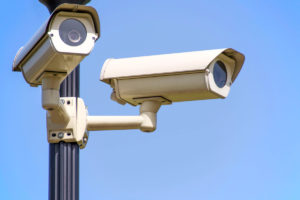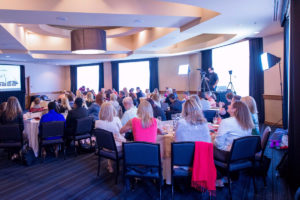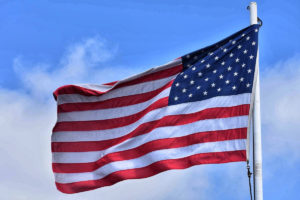 Now that fall is upon us it is getting darker earlier. These hours of darkness can bring unique challenges for retail owners. Have you ever considered that it is your responsibility to help keep customers and employees remain safe while they are on your property? It may make sense that you are responsible for employee safety but you are also obliged to help keep customers safe as well. This includes your parking lot and the exterior areas around the building. How do you do this? What do you have to protect against? Good questions and hopefully we can provide you with answers to those questions and suggestions to make your business safer.
Now that fall is upon us it is getting darker earlier. These hours of darkness can bring unique challenges for retail owners. Have you ever considered that it is your responsibility to help keep customers and employees remain safe while they are on your property? It may make sense that you are responsible for employee safety but you are also obliged to help keep customers safe as well. This includes your parking lot and the exterior areas around the building. How do you do this? What do you have to protect against? Good questions and hopefully we can provide you with answers to those questions and suggestions to make your business safer.
What is it that you need to protect against as the daylight hours become shorter?
- The potential for robberies increases in the hours of darkness.
- Slip/trip/fall accidents in the parking lot can increase when it is dark as hazards are more difficult to see.
- Car break-ins can increase.
- Working at night can have an impact on your employees.
- The risk of violence can increase.
Planning for operating a store during extended hours of darkness can help prevent problems that could arise. According to an Occupational Safety and Health Administration (OSHA) power point presentation, “Recommendations for Workplace Violence Prevention Programs in Late-Night Retail Establishments” one of the panels states”; “Late-night retail businesses such as convenient stores, liquor stores, and gasoline stations have experienced high homicides and assault rates”. The same power point on panel 5 goes on to mention the following as risk factors for late-night retail workers:
- Exchange of money
- Solo work and isolated work sites
- Sale of alcohol
- Poorly lit stores and parking lots
- Lack of staff training in recognizing and managing escalating hostile and aggressive behavior
There are things store owners can do to mitigate the risks to their employees and patrons.
- Inspect parking lots and sidewalks now for potential trip hazards. Have curbs painted yellow to make them fire lanes as well as making them brighter to reduce the chance someone trips on them. Paint parking stops or blocks a reflective white or yellow again to lower the risk of tripping.
- Cracked or raised sidewalks should be repaired or reported to a landlord.
- Check the parking lot light timers to ensure they turn on as it becomes dusk.
- Inspect all parking lot lights and have burned out lamps replaced.
- Add extra exterior building security lights.
- If you have not installed them, have night vision security cameras set up to monitor the parking lot, sidewalks, entrances, and corners that may be out of view.
- Install interior cameras and Public View monitors. These cameras should be at the front entrance and exits, cameras that capture activity at and around cash registers and a camera in a cash office that can see the safe and as much of the office as possible.
- Have a cash drop at each register for $50 and $100 bills.
- Keep register positioned away from customers so they cannot reach over the counter into the till.
- Always have at least two people working in a store and never allow one person to close or open alone.
- If you have two people working consider having an employee offer to watch a patron walk to their car when they leave. Patrons will appreciate it and it will make them feel safer.
- If your credit machine accepts debit cards think about refusing cash back transactions after 6 pm. You won’t have to make as many trips to the safe to refill the register after dark.
- Use a counterfeit bill detector for all $20, $50 and $100 bills.
- Train each employee on how to recognize and de-escalate aggressive situations. This is also a good reason to have a second person working.
- If you can only afford one employee at a time and your business is in a strip mall partner with a neighboring business to work together to provide mutual security/support at opening and closing.
- Employees may get tired more easily as the daylight decreases. Be aware that it can lower their alertness while working and when they drive home. Encourage workers to be careful so they don’t hurt themselves or others.
Operating stores can be different when darkness comes along earlier. Taking the right precautions, being aware of potential issues and planning ahead can make that transition easier. Don’t take hours of darkness lightly.
 Maybe you have seen it before and never gave it much thought, you walked by a cash register and saw a gift card lying next to it. A customer probably just changed their mind, right? Perhaps you saw your salesfloor person wearing a heavy jacket while working but you just attributed it to them being cold all the time. You may notice cash shortages periodically but they are under $10 and some people get busy and make little mistakes, it happens. Then there is the cashier that seems to be really interested in the store and always reports suspicious people he sees. He even asks managers if there might be security camera footage that could be reviewed to see the “suspect” in case they return. There is the saleswoman who finds a lot of empty packages on the floor and reports them to the manager and where she found them so managers would know about theft taking place in the store. These each seem like harmless issues on the surface but could there be something more nefarious going on under your nose? Is something starting to seem a bit curious after all? If you are suspecting something dishonest may be going on in your store what is your next step?
Maybe you have seen it before and never gave it much thought, you walked by a cash register and saw a gift card lying next to it. A customer probably just changed their mind, right? Perhaps you saw your salesfloor person wearing a heavy jacket while working but you just attributed it to them being cold all the time. You may notice cash shortages periodically but they are under $10 and some people get busy and make little mistakes, it happens. Then there is the cashier that seems to be really interested in the store and always reports suspicious people he sees. He even asks managers if there might be security camera footage that could be reviewed to see the “suspect” in case they return. There is the saleswoman who finds a lot of empty packages on the floor and reports them to the manager and where she found them so managers would know about theft taking place in the store. These each seem like harmless issues on the surface but could there be something more nefarious going on under your nose? Is something starting to seem a bit curious after all? If you are suspecting something dishonest may be going on in your store what is your next step? The retail industry loses an approximate $45 billion a year due to shoplifting, organized retail crime, merchant, and clerical errors. For the small retail owner, any loss due to shoplifting puts a financial strain on their ability to do business, hire more personnel or invest and grow their business.
The retail industry loses an approximate $45 billion a year due to shoplifting, organized retail crime, merchant, and clerical errors. For the small retail owner, any loss due to shoplifting puts a financial strain on their ability to do business, hire more personnel or invest and grow their business. You think that you may be scoring a great deal on cheap, knock-off Electronic Article Surveillance (EAS) hard tags and labels, however, over time you find that you are missing shoplifters due to poor pick rates or hard tags that are easy to defeat. Why? To make real, quality EAS hard tags and labels it takes more effort and time. The materials and sophistication of the circuit is not something that can be easily done by a slave laborer in some dark factory in a third world nation. The labels we sell are all high-quality EAS labels and tags that are both Sensormatic and Checkpoint Systems compatible.
You think that you may be scoring a great deal on cheap, knock-off Electronic Article Surveillance (EAS) hard tags and labels, however, over time you find that you are missing shoplifters due to poor pick rates or hard tags that are easy to defeat. Why? To make real, quality EAS hard tags and labels it takes more effort and time. The materials and sophistication of the circuit is not something that can be easily done by a slave laborer in some dark factory in a third world nation. The labels we sell are all high-quality EAS labels and tags that are both Sensormatic and Checkpoint Systems compatible. In every career, there are people, places, and things that help to shape who you become in that career. A Retail Loss Prevention career is no different. My career in Loss Prevention goes back nearly 27 years. A long time ago in a department store not far away I was hired as a Loss Prevention Associate with only my military experience and a college degree in hand. I had absolutely no Loss Prevention background. There have been lessons learned along the way that shaped the way I approached Loss Prevention and the way I developed my style of working with people and managing others.
In every career, there are people, places, and things that help to shape who you become in that career. A Retail Loss Prevention career is no different. My career in Loss Prevention goes back nearly 27 years. A long time ago in a department store not far away I was hired as a Loss Prevention Associate with only my military experience and a college degree in hand. I had absolutely no Loss Prevention background. There have been lessons learned along the way that shaped the way I approached Loss Prevention and the way I developed my style of working with people and managing others. How many times have you caught yourself in a conversation with another manager or a supervisor discussing a seasonal merchandise question or an inventory preparation question and found yourself saying, “I think we did it this way” or “ It seems to me customers were buying such and such last year”? It can be frustrating, especially when the discussion may influence whether an item should be carried or if it was carried the prior year was it a flop? The same thing happens with inventory. Did we start prepping 5 days out? No? Maybe it was 3 days out. Having checklists can make these conversations fewer in number and improve productivity as well as sales performance.
How many times have you caught yourself in a conversation with another manager or a supervisor discussing a seasonal merchandise question or an inventory preparation question and found yourself saying, “I think we did it this way” or “ It seems to me customers were buying such and such last year”? It can be frustrating, especially when the discussion may influence whether an item should be carried or if it was carried the prior year was it a flop? The same thing happens with inventory. Did we start prepping 5 days out? No? Maybe it was 3 days out. Having checklists can make these conversations fewer in number and improve productivity as well as sales performance. The laws in the United States concerning shoplifting undergo changes that in some instances put the strain on the retailers and their profit margins.
The laws in the United States concerning shoplifting undergo changes that in some instances put the strain on the retailers and their profit margins. We supply and install the best anti-shoplifting equipment made. Checkpoint Systems is the gold standard of Electronic Article Surveillance (EAS) equipment. Support is off the chart. Checkpoint Systems has factory Tech’s everywhere, I mean EVERYWHERE. They have to since the majority of the top retailers in the world are using Checkpoint equipment. These Techs are not sub-contractors. They are skilled EAS, Radio Frequency (RF) experts. As an example, my Sr. Tech Dan is a former Navy Electronics Technician; he worked on highly advanced systems that protect our country.
We supply and install the best anti-shoplifting equipment made. Checkpoint Systems is the gold standard of Electronic Article Surveillance (EAS) equipment. Support is off the chart. Checkpoint Systems has factory Tech’s everywhere, I mean EVERYWHERE. They have to since the majority of the top retailers in the world are using Checkpoint equipment. These Techs are not sub-contractors. They are skilled EAS, Radio Frequency (RF) experts. As an example, my Sr. Tech Dan is a former Navy Electronics Technician; he worked on highly advanced systems that protect our country.